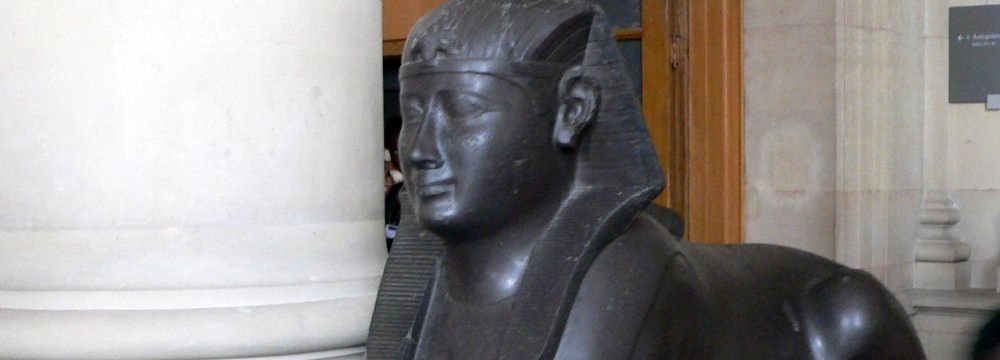National Museum Borrows Artworks From Louvre

TEHRAN.(Iranart) - A collection of relics borrowed from the Louvre Museum will be on show at the National Museum of Iran for three months at an exhibition titled Louvre in Tehran.
According to head of Iran’s National Museum Jebraeil Nokandeh, the exhibit will open on March 5 and run until June 8, and will display more than 50 artifacts belonging to ancient civilizations of western Asia, Europe and North Africa, ISNA reported.
“The relics are from Sumer, Assyria, Hitti, Ancient Egypt, Ancient Greece and Rome civilizations as well as a collection of paintings, designs and lithography among which are the works of great European artists such as Eugène Delacroix and Jean-Baptiste-Camille Corot,” Nokandeh said.
Of the distinguished relics on display will be the ‘Royal Sphinx’ taken from the Department of Egyptian Antiquities at the Louvre in Paris.
The basalt Royal Sphinx bears the name of the Pharaoh Hachoris (393–380 BC), of the 29th Dynasty.
Louvre is the world’s largest art museum and home to nearly 35,000 objects from the prehistoric times to the 21st century.
The National Museum of Iran, officially inaugurated in 1937, owns relics belonging to ancient and medieval times that include pottery vessels, metal objects, textile remains, rare books and coins.
The exhibit will mark the first such cooperation between the two museums. Initial agreements were reached in April 2016 when a delegation headed by Louvre Director Jean-Luc Martinez met with Masoud Soltanifar, the former head of Iran’s Cultural Heritage, Handicrafts and Tourism Organization.
Details were ironed out last March in Tehran during a meeting between Marielle Pic, director of Louvre’s Middle Eastern Antiquities Department, and Nokandeh.
“The deal shows the level of trust between Iran and France, and is a testament to the improvement in managing our museums,” said Mohammad Reza Kargar, director of Museums and Historical Moveable Properties Office at ICHHTO.
“This project will help enhance public knowledge about other cultures,” Kargar said, calling on people to visit the rare event.

